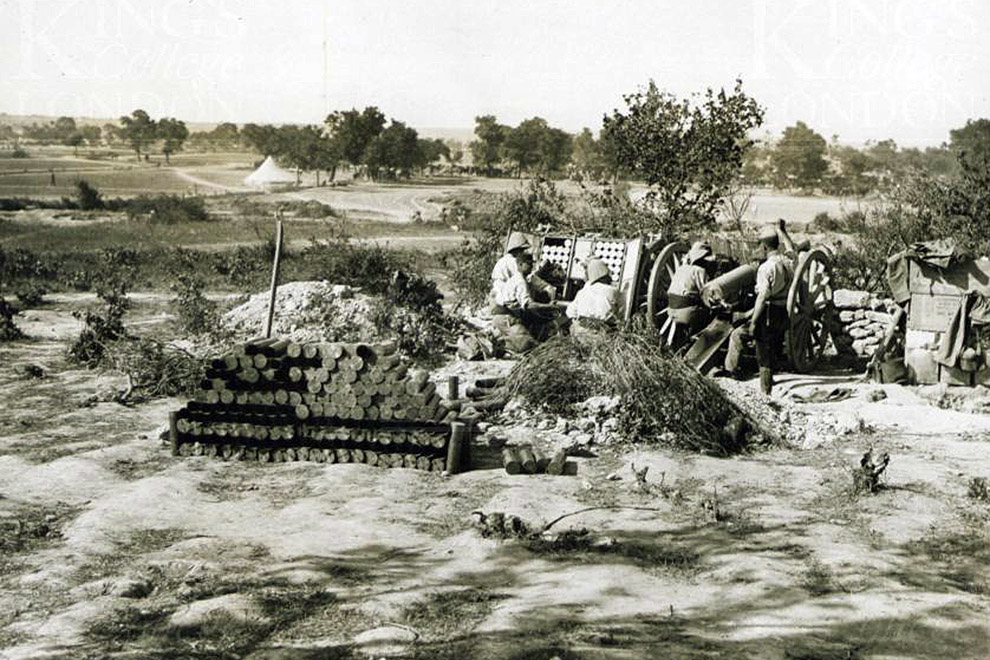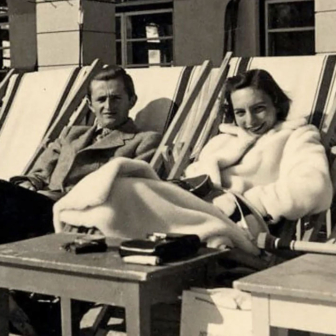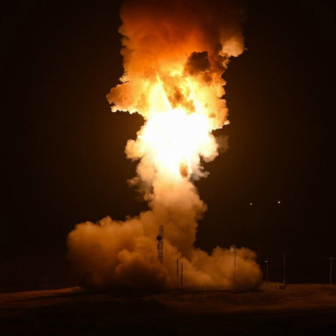Australia’s “baptism of fire” has become a potent blend of memory and mythology. And for a few weeks recently, retailing also became part of that mix when Woolworths and other corporations tried to boost their profits on the back of the slaughter at Gallipoli. The fresh food people wanted us to keep the Anzac soldiers “fresh in our memories” and celebrate Anzac Day as “the birth of the Anzac spirit that we now pass on to all young Australians.”
Commentators were quick to denounce this branding exercise. But any attempt to purify the Gallipoli centenary can also distort the way we remember the events of 1915 by downplaying the multinational history of the conflict.
Among the forces serving in the Gallipoli campaign were thousands of British and French colonial troops – soldiers who fought and died on the peninsula but have largely been written out of the centenary history. Alongside Anglo-Celtic Anzac soldiers were Indigenous Australians, Maoris, Senegalese, Zouaves, Sikhs, Gurkhas and Newfoundlanders, as well as a contingent of Zionists from Palestine who formed the Zion Mule Corps.
Bruce Scates, who chaired the Military and Cultural History Group of the Anzac Centenary Program, has argued that the Gallipoli commemorations often ignore the role of other nations. “We are in danger of returning to a narrow, nationalistic and self-congratulatory account of that costly and ill-conceived campaign,” he writes. “In our rush to remember, we run the danger of forgetting.”
After the conflict on the Western Front became bogged down in trench warfare in early 1915, the First Lord of the Admiralty, Winston Churchill, began planning a second front. But his early vision of a naval campaign to capture the Dardanelles Straits was abandoned when the French battleship Bouvet sank on 18 March, with the loss of 600 men. Instead, the fateful land invasion was launched on 25 April.
Although the campaign was led by British commanders, an estimated 80,000 French nationals served in Gallipoli, and nearly 15,000 of them died there. As Britain’s Imperial War Museum points out, “vivid testament” to their presence can still be found on the peninsula, “where, in the French Cemetery above S Beach, there are over 2000 individual grave markers as well as five huge white ossuaries each containing the remains of up to 3000 men.”
The French Corps Expéditionnaire d’Orient, initially a single infantry division, grew to two divisions for the Gallipoli campaign. The 1st division had originally been recruited in North Africa from French settlers, and Arab and African soldiers. By 1915, the Corps included an African Regiment of Zouave and Foreign Legion troops. (The Zouaves, originally recruited from the Berber population of Algeria, were augmented by troops from across North Africa and even prisoners of war and deserters from Alsace and Lorraine.) There were also two colonial regiments, each comprising a European battalion and two battalions of West African Senegalese Tirailleurs. From March to December 1915, Senegalese made up more than half the French expeditionary force.
On 25 April, to provide a diversion for the Gallipoli landings, the French 6th Colonial Regiment led an assault near Kum Kale on the Asian side of the Straits. The seizure of Kum Kale was the only success that day, but the French troops were soon withdrawn, with 300 killed and nearly 500 wounded. “Till the first rays of dawn the next day, we are leaning over wounded in an atmosphere of blood, of groans, and of indescribable horrors,” reported medical officer Joseph Vassal of the 6th Colonial Regiment. “There is a Senegalese with his head torn, a foot missing, and three fingers on the hand gone. Another Black, waiting his turn on a chair, is asked, ‘Beaucoup malade?’ [Are you very ill?] The doctor looks. Both legs have been torn off by a shell.”
The next day, the French troops joined British forces on Cape Helles, in the south of the Gallipoli Peninsula. They held the eastern part of the Allied line on Cape Helles and took part in the First Battle of Krithia on 28 April. The French troops were hammered by the Turkish forces, who halted their advance and caused massive casualties among the Senegalese and Zouave units. With many of them dressed in red trousers and white cork hats, the soldiers were an easy target for the Turkish machine gunners.
In early May, successive French attacks at Krithia were beaten off by the Turks. Snipers killed the French officers and Senegalese troops retreated in confusion. General Sir Ian Hamilton, British commander of the Mediterranean Expeditionary Force, dismissed the colonial troops as “niggy wigs” and “golly wogs.” Over the next few weeks, the French advance on the right of the peninsula was blocked by Turkish deployments on Kereves Dere, a deep gully running inland from the Dardanelles coast.
By June, the stalemate had led to a collapse in morale among French troops. With limited medical evacuation, only a litre of water a day and trenches filled with rats and lice, they suffered alongside other nationalities. In September, much of the Corps Expéditionnaire d’Orient was redeployed to Salonika under French command – troops from Senegal, Martinique and other French colonies formed the bulk of the remaining troops. By year’s end, when the remaining 21,000 French troops were withdrawn, only one man in three from the corps was unscathed by injury or disease.
Overall, the French had sustained 14,340 dead or missing and an estimated 40,000 wounded, including 20,000 medical evacuations. (Among the Australians, 8709 were killed in action or died of wounds or disease, and another 19,441 were wounded.)
The overwhelming silence in Australian commentary about the role of colonial troops at Gallipoli is mirrored in France, where the major focus of commemoration is the slaughter on the Western front. As British historian Matthew Hughes writes, “in France there is only one monument to the men who died at Gallipoli, on the Corniche in Marseilles, the harbour from which most of the troops left.”
More than 1.3 million South Asians served in the British Imperial Army during the first world war, and more than 140,000 of them died. Some 15,000 Indian troops were deployed at Gallipoli, with Indian mountain gun batteries operating in the Anzac area from the landing on 25 April until the August 1915 offensive. The Punjabi Muslim gunners among the 7th Indian Mountain Artillery Brigade were the only allied Muslim troops in action against the Turks on the peninsula.
“The Indian story, and it was a substantial one, must therefore be unravelled from amongst the larger official accounts of the war,” writes Indian historian Rana Tej Pratap Singh Chhina. “There are almost no records that preserve the subaltern voice of the Indian rank and file, apart from the fortuitous collection of letters passed down by the Indian censors in France.”
During the August offensive, the 6th Gurkhas participated in the climactic battle of Sari Bair alongside a Maori contingent from New Zealand. Around one-in-five of the 500 New Zealanders were killed or wounded. The surviving Nepalese soldiers seized the heights of Hill Q on Sari Bair ridge, the furthest Allied advance during the August offensive of the Gallipoli campaign, but were forced to retreat when they were mistakenly shelled by the Royal Navy.
The francophone West Africans serving at Gallipoli were not the only French colonial troops deployed during the war. After the massacre of French soldiers in Europe during the summer of 1914–15, the French high command agreed to expand recruitment to France’s overseas colonies.
In France’s Pacific dependencies – New Caledonia and the Etablissements Français d’Océanie – young men from both settler and Islander communities joined colonial regiments. A quarter of the male population of New Caledonia enlisted or were conscripted, including 1087 French settlers and 1010 Kanaks. Across the Pacific as a whole, 1817 volunteers and 2213 conscripts signed up for the French Pacific battalion. After two warships from the German Far East Flotilla attacked Tahiti in September 1914, 1115 men were recruited to fight in Europe between 1915 and June 1917.
In June 1916, the Bataillon de Tirailleurs du Pacifique, comprising companies of Kanak and Tahitian soldiers, deployed for France. New Caledonians serving with the 5th Regiment of colonial infantry fought on the Somme, at Verdun and in other slaughterhouses. Some 575 New Caledonians, including 382 Kanaks, died for “the motherland.”
Maori and islanders from New Zealand’s Pacific colonies also joined the war effort. On the tiny island of Niue, 150 men joined the 1st Niue Regiment, sailing to Egypt and France in February 1916 as part of New Zealand’s 3rd Maori contingent. Margaret Pointer’s poignant history of the Niuean contingent, Tagi Tote e Loto Haaku: Niue Island Involvement in the Great War, documents how most of the islanders were struck down by influenza, pneumonia or dysentery and were repatriated without firing a shot.
Not everyone rushed to support the Empire. In New Zealand’s Taranaki and Waikato districts, where hundreds of thousands of acres of land had been confiscated after the Maori wars, the indigenous tangata whenua refused to join the colours. In New Caledonia, the 1917 revolt led by Chief Noel highlighted Kanak opposition to French colonial rule, with French soldiers declaring a new military front to crush the rebellion.
On their return to New Caledonia, Kanak soldiers who had survived the slaughter on the Western front were once again placed under the Indigénat, a native affairs administration that denied them the right to vote and restricted them to tribal reserves. Along with indentured labourers and French women, Kanaks only obtained the vote following the second world war, after communist activists had started agitating in the tribal reserves and indigenous soldiers returning from European battlefields had begun petitioning for civil rights.
In Australia, the fate of the “Black diggers” and other returning soldiers – including Alexander McKinnon, an Aboriginal station hand from the Northern Territory who fought and died at Passchendaele in 1917 – has been captured by the moving memorial “One Hundred Stories.”
From Australia to New Zealand, from Niue to New Caledonia, the war is commemorated by memorials to the fallen. But, as Elizabeth Rechniewski writes, these statues can create new conflicts: “The landscapes of Australia and New Caledonia are crowded with monuments that we unproblematically refer to as ‘war memorials’ and yet nothing is less evident than what constitutes a ‘war,’ or what distinguishes a soldier from a fighter. Nothing is more controversial than whose wars we should commemorate and why.”
Following the signing of New Caledonia’s Noumea Accord in 1998, Kanak independence activists began agitating for a proper accounting of the islanders who died for France. On the main Monument aux Morts in Noumea, each European soldier from New Caledonia who died during the first world war is listed by name. On the reverse side, however, the Kanak dead were nameless – the memorial simply listed each village or island, with the number of casualties inscribed in the stone.
In the northern town of Koné, a memorial with a statue of a first world war French soldier was damaged in 2010. The local Kanak mayor replaced it temporarily with a wooden statue of a Kanak warrior who had died defending his own land. Within days, the new statue had been daubed with red, white and blue paint. Then independence activists covered the colours of the French tricolour with the multicoloured flag of Kanaky. To end this outbreak of the history wars, the statue was removed, and the plinth remains empty today.
This year, the Anzac centenary once again highlights the contested nature of military history and the silence of colonial narratives in Australia and across the region. As Bruce Scates suggests, “It is time to look beyond that narrow beachhead at Anzac Cove, acknowledge the futility of war and mourn the suffering of nations other than our own.” •




